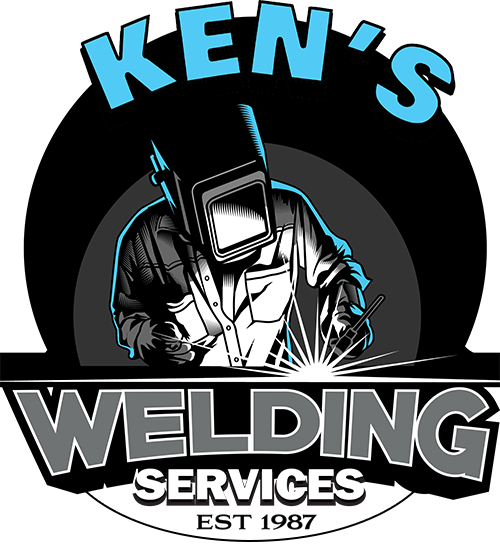Certified Welding Inspection Service for Construction Sites
Wiki Article
Opening the Key Kinds of Welding Services for Your Jobs
In today's landscape of diverse welding services, comprehending the nuances and applications of different welding methods is vital for effective project implementation - Welding Inspection Service. By unraveling the crucial kinds of welding services offered, one can browse the ins and outs of choosing the most suitable strategy to ensure accuracy, efficiency, and top quality in welding tasks.Typical Welding Methods
Several commonly used welding techniques play essential functions in various industrial sectors. One of the most widely made use of approaches is Gas Steel Arc Welding (GMAW), likewise known as MIG welding.Another popular welding strategy is Gas Tungsten Arc Welding (GTAW), generally described as TIG welding. TIG welding uses a non-consumable tungsten electrode to produce the weld and requires a different filler product. This method is favored for its control, ability, and precision to generate high-grade welds on slim materials.
Protected Metal Arc Welding (SMAW), or stick welding, is one more important approach where a flux-coated electrode is used to produce the weld. SMAW is recognized for its simplicity, flexibility, and viability for on-site and outside welding applications. These common welding strategies are necessary for fabricating frameworks, machinery, and different equipment across sectors.
Advanced Welding Processes
Advanced welding processes incorporate cutting-edge techniques that press the borders of standard welding techniques in terms of flexibility, performance, and accuracy. One such process is laser beam of light welding, which uses a concentrated beam to join steels with very little heat-affected areas, making it ideal for high-precision or delicate jobs. Furthermore, electron light beam welding uses a high-velocity electron beam of light to develop deep welds in thick products, using outstanding toughness and quality.In addition, friction stir welding is a solid-state joining process that uses a rotating tool to create frictional warmth, bonding materials without thawing them. This approach is specifically useful for signing up with light-weight alloys with exceptional mechanical residential properties. One more innovative strategy is ultrasonic welding, where high-frequency ultrasonic vibrations are used to develop solid-state welds in plastics, steels, and other materials, offering clean and rapid signing up with options.
These advanced welding processes deal with a varied variety of commercial requirements, giving reliable, top notch, and precise services for different jobs, from aerospace components to auto components and beyond.
Specialized Welding Applications

Automated Welding Solutions
In contemporary commercial settings, the application of automated welding services has actually revolutionized production processes by improving efficiency and precision. Automated welding systems use innovative innovations such as robotics, computer numerical control (CNC), and man-made knowledge to carry out welding jobs with minimal human treatment (Welding Inspection Service). These systems use various advantages, including boosted performance, boosted weld quality, and minimized production costsOne secret benefit of automated welding services is their capacity to constantly create top notch welds, bring about enhanced total item quality. Furthermore, these systems can operate continually, 24/7, without the demand for breaks, causing greater output degrees and faster task completion times. By making use of automated welding services, firms can likewise alleviate the dangers connected with human mistake, making sure better precision and repeatability in the welding procedure.
In addition, automated welding options are highly versatile and adaptable to numerous welding applications, from intricate parts to large-scale frameworks. Whether in auto production, aerospace industries, or building projects, the assimilation of automated welding systems supplies an affordable edge by simplifying operations and providing superior welding outcomes.
Cutting-edge Welding Technologies
The development of automated welding services has led the way for the combination and improvement of innovative welding technologies in modern-day industrial applications. One such cutting-edge modern technology is laser beam of light welding, which utilizes an extremely concentrated beam of light of light to join metal parts with precision and performance. This technique is specifically helpful for jobs requiring complex welds on materials with high melting factors or for applications where marginal heat-affected zones are important.Another ingenious welding check that modern technology acquiring appeal is friction mix welding (FSW), a solid-state signing up with procedure that creates high-strength bonds by creating frictional warmth between 2 pieces of steel. FSW is widely utilized in sectors such as aerospace and auto for its capacity to generate welds with superior mechanical residential properties and enhanced structural stability.
In addition, electron light beam welding (EBW) is a sophisticated method that utilizes a light beam of high-velocity electrons to create exact, deep welds in metal elements. This modern technology is favored for its ability to weld dissimilar steels and materials with differing thicknesses efficiently. As markets remain to demand higher high quality and performance in welding processes, these ingenious modern technologies are positioned to play a significant function fit the future of industrial welding applications.

Conclusion
In conclusion, recognizing the key kinds of welding services is important for effectively completing a variety of projects. From common welding techniques to innovative procedures, specialized applications, automated options, and ingenious technologies, each method supplies distinct advantages and applications. By familiarizing on your own with these different welding choices, you can select the most ideal approach for your details job requirements and achieve top quality outcomes.In today's landscape of varied here welding services, recognizing the subtleties and applications of various welding strategies is vital for effective task implementation. By deciphering the crucial kinds of welding solutions readily available, one can navigate the details of choosing the most appropriate strategy to make sure accuracy, effectiveness, and quality in welding tasks. As we begin on this exploration of welding services, a much deeper insight right into the world of welding waits for, encouraging insights that can elevate the end results of your jobs.

Report this wiki page